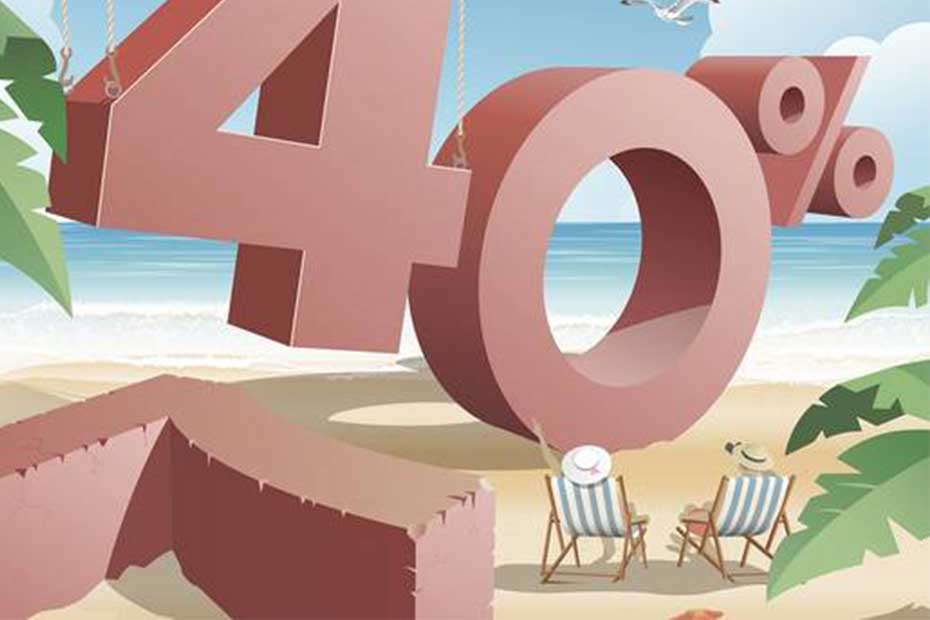Published June 29, 2016 • 7 Min Read
Do you really need 70 per cent of your preretirement income in order to retire comfortably? Or $1-million in the bank?
Many investors have a set number in mind when they think about how much they will need for retirement. Perhaps they’ve heard it from a friend or a family member or they’ve read it in an article or on a blog.
But while 70 per cent was once considered the traditional “rule of thumb” to fund a comfortable retirement, Mary Warwick, investment and retirement planner for RBC Financial Planning in Guelph, Ont., says relying on a particular number won’t tell you the whole story.
“What I typically hear when clients walk in is, ‘I was told . . . ‘” says Ms. Warwick. “And what I say to them is, ‘Put all that aside, forget everything you’ve heard and let’s start talking about you.’”
Ms. Warwick says she often ends up having to reassure worried individuals who come through her doors, panicking that they’re not going to have enough money to retire. Much of the time, they actually need less than they think. To really determine the amount of money someone will need in retirement, you need to start with a frank discussion of what that person wants to do when they get there, she adds.
“Some clients think immediately about the money and jump right to numbers,” she explains. “I tell them to step back – I say to them, ‘This is about you; it’s not about the dollars.’ As a financial planner, my goal is to understand what it is my client wants to do – to get them to really look at their life and say, ‘If these are the things I want to accomplish, how do I actually get there?’”
A retirement calculator can be a useful way to discover what will and will not be an expense in retirement, once you’ve determined what you want your retirement to look like, says Ms. Warwick.
“You have your ongoing expenses and your one-time expenses, and you can do a preretirement budget and a retirement one,” she notes. “That’s what starts the conversation about what will actually be an expense that you will have in retirement, versus what you’re paying now.”
Fred Vettese is chief actuary at Morneau Shepell, a Toronto-based consulting firm focused on health, benefits and retirement. He says the amount most people will need in retirement is much less than 70 per cent of their “working life” income.
“It can’t be 70 per cent by definition,” notes Mr. Vettese the co-author of The Real Retirement: Why You Could Be Better Off Than You Think, and How to Make That Happen. “If you look at how you live your life in your 30s and 40s and 50s, you’re raising children, you’re paying a mortgage, you’re saving for retirement. All those things go away by the time you retire.”
Mr. Vettese gives the example of an average couple in the middle of their career, who are typically using around 25 per cent of their total income for mortgage payments, another 20 per cent for their children and 20 per cent for retirement savings and payroll deductions, like Employment Insurance.
Once you take those expenses into account, says Mr. Vettese, most people in their prime mortgage-paying, child-raising years are living on no more than 30 or 40 per cent of their gross take. So how could they need 70 per cent of their working-life income once they are retired?
“People will say, ‘Sure, that was true when I was 30 or 40, but by the time I’m 57, the mortgage is paid off, and the kids have left home.’ But let’s say up until that time, you were spending 30 or 40 per cent of your pay on yourself, and, all of a sudden, you have 75 per cent [of your total income] that you can work with. Now you can catch up on retirement savings or you can do that one-time spending – that global trip you always wanted to take or that Rolex you always wanted. [Those are expenses] you won’t have to duplicate in retirement.”
Mr. Vettese says it’s possible that people could need 70 or 80 per cent of their working income in retirement, “but only if they want to aspire to a lifestyle that they never had when they were younger.”
He agrees with Ms. Warwick that, when talking about income needs in retirement, it’s “not as simple as coming up with one number.”
Renters or people with no children – those who spent more of their total income purely on themselves over the years – may require a higher percentage of their income to retain their standard of living. But he suggests that for the “vast majority of us, who had a house and two or more children, you will need about 50 per cent [of your working income].”
Preretirees also tend to forget about new sources of income they might have in retirement. On the “supply” side, says Mr. Vettese, “there’s OAS [Old Age Security pension], there’s CPP, there’s also the potential to downsize your house. I know a lot of people who are downsizing in retirement, and they are unlocking 20 or 25 per cent of the equity in the house and also reducing their living expenses at the same time.”
Ms. Warwick points out that there are a number of preretirement expenses that decrease or disappear in retirement that can make it more affordable.
“People always forget about insurance. If you’re one of those responsible people who has disability insurance while still working, that could be an expense of $300 or $400 dollars a month. All of a sudden, that’s taken off the table.” Then there are the many expenses related to your job: “car repairs, gas, meals, so many things,” she adds.
Ms. Warwick warns that there are some expenses that can push up costs in retirement, though. Health care expenses are one example; or you may decide you want to provide financial support to help out your children or grandchildren.
Even if costs are looking steep, the process of putting together an estimated budget allows you to figure out ways to make it work with the funds you’ve got.
“Once you break it out, you can see what your budget looks like now, and what your budget will look like then and what’s the offset? In other words: Are you willing to give up this goal? Or if not, how would you see yourself getting there?”
Ms. Warwick says the fear of not reaching some magical threshold of income can often keep people from seeking out the advice of an adviser or financial planner.
“I think people are afraid of what they don’t know or that they won’t ‘show well.’ It’s similar to how they won’t go to the doctor because they’re afraid something’s wrong,” she says.
“However, for the vast majority of people, by taking that first step and realizing you need a financial plan, you’re three-quarters of the way there.”
This article originally appeared in the Globe & Mail in January 2016.
This article is intended as general information only and is not to be relied upon as constituting legal, financial or other professional advice. A professional advisor should be consulted regarding your specific situation. Information presented is believed to be factual and up-to-date but we do not guarantee its accuracy and it should not be regarded as a complete analysis of the subjects discussed. All expressions of opinion reflect the judgment of the authors as of the date of publication and are subject to change. No endorsement of any third parties or their advice, opinions, information, products or services is expressly given or implied by Royal Bank of Canada or any of its affiliates.
This article is intended as general information only and is not to be relied upon as constituting legal, financial or other professional advice. A professional advisor should be consulted regarding your specific situation. Information presented is believed to be factual and up-to-date but we do not guarantee its accuracy and it should not be regarded as a complete analysis of the subjects discussed. All expressions of opinion reflect the judgment of the authors as of the date of publication and are subject to change. No endorsement of any third parties or their advice, opinions, information, products or services is expressly given or implied by Royal Bank of Canada or any of its affiliates.
Share This Article






